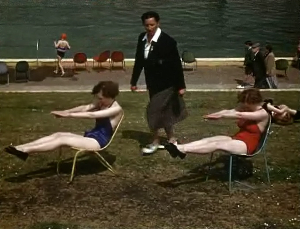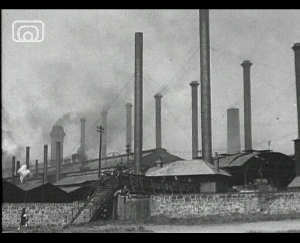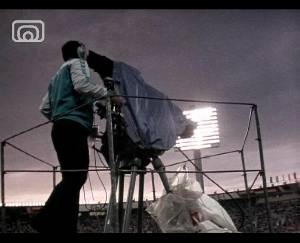Moving Image Education
What is Moving Image Education?
Moving image education (M.I.E.) is a way of developing literacy skills using moving image texts. When we have 'media literacy' we are able to watch, discuss, analyse, criticise and understand moving image texts. We are also able to harness these skills to create our own moving image texts.
Here you can read about the different ways films can be used for learning:
Literacy across learning
The Scottish Curriculum for Excellence recognises films as texts through which ideas, experiences, opinions and information can be communicated. Scotland on Screen has been developed with the curriculum in mind, especially literacy.
Use of this website can enable learners to show progress in reading, writing, critical literacy, listening and talking, creative expression and digital literacy.
Archive films are special. They offer us a view onto the past (in the 20th century) that we would otherwise not be able to experience. The film clips on Scotland on Screen provide opportunities to explore a wide range of subjects including history, technology, science, social studies, citizenship and the expressive arts. They link the past with the present (and, sometimes, the future).
A great deal of thought, effort, experience and organisation goes into the making of both fictional and factual films in order to communicate very precise meanings.
When viewing the films on this website, we want to encourage you to ask questions about the choices made by the filmmakers in planning, shooting and editing their films.
Scotland on Screen is a rich resource for creative and technical study that can help learners understand narrative and build confidence in self-directed learning and research.
Our digital age
Screen media is the dominant form of cultural communication in this country.
Since the 1960s there has been a TV in virtually every home. Today the moving image is an inescapable aspect of our lives, whether we are working, watching TV, online or using interactive technologies.
Children and young people are now spending less time watching television sets and more time online, watching moving image content on tablets and smartphones (Ofcom 2016 'Children and Parents Media Use and Attitudes' report ). Concerns are ongoing about how much screen time is healthy for us. In 2018 the British Psychological Society published some recommendations that can help young people have a positive experience with online media, including:
Encourage children to experience a mix of screen-based and non-screen-based activities
Media behaviours such as co-use and active goal-directed use can help young people gain the most from digital media
Parents and carers should share and discuss media activities with their children
Scotland on Screen is ideally suited to help meet these conditions. The site encourages group work and discussion, focused activities and sharing with family members across the generations. We also encourage time away from the screen for reflection and creative learning.
We can make our own movies
We are very fortunate today in that almost everyone owns filmmaking technology of some sort whether it is a DV camera, digital stills camera with movie setting, mobile phone or tablet. Add to this the fact that every personal computer comes with a video-editing package integrated into the operating system, whether this be Windows Moviemaker or Apple iMovie, and it becomes clear that the production of screen texts is accessible to us all.
Scotland on Screen can help learners feel confident using this technology. Each page is geared toward encouraging the appreciation, critical analysis and creation of moving image texts.


